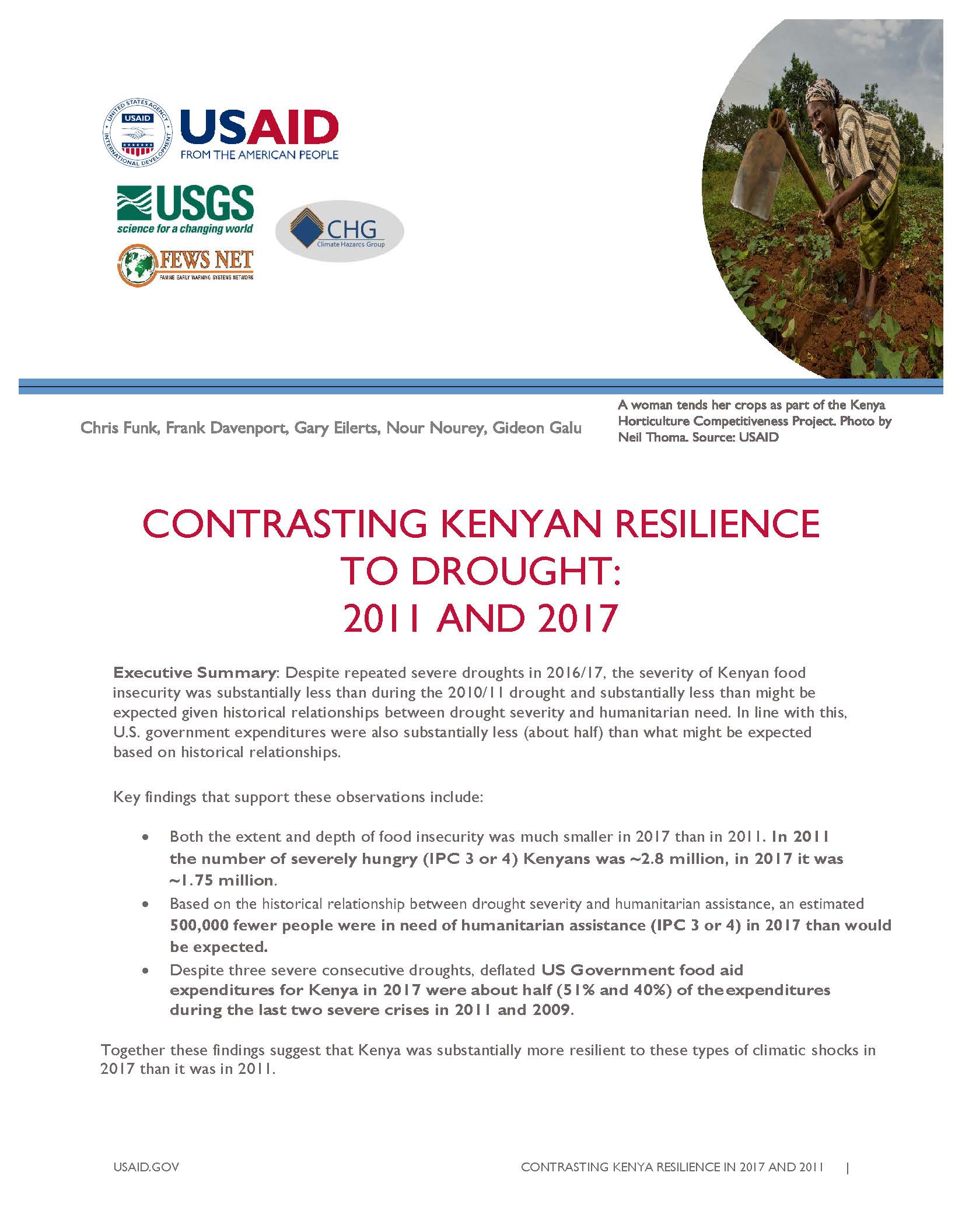Speeches Shim
Despite repeated severe droughts in 2016/17, the severity of Kenyan food insecurity was substantially less than during the 2010/11 drought and substantially less than might be expected given historical relationships between drought severity and humanitarian need. In line with this, U.S. government expenditures were also substantially less (about half) than what might be expected based on historical relationships.
Key findings that support these observations include:
- Both the extent and depth of food insecurity was much smaller in 2017 than in 2011. In 2011the number of severely hungry (IPC 3 or 4) Kenyans was ~2.8 million, in 2017 it was~1.75 million.
- Based on the historical relationship between drought severity and humanitarian assistance, an estimated500,000 fewer people were in need of humanitarian assistance (IPC 3 or 4) in 2017 than wouldbe expected.
- Despite three severe consecutive droughts, deflated US Government food aidexpenditures for Kenya in 2017 were about half (51% and 40%) of theexpendituresduring the last two severe crises in 2011 and 2009.
Together these findings suggest that Kenya was substantially more resilient to these types of climatic shocks in 2017 than it was in 2011.
This report examines two main questions – i) how bad was the 2016/2017 drought in Kenya, compared to the signature recent drought in 2010/11, and ii) given the relative severity of the 2016/17 drought, was the depth of food insecurity and food assistance costs associated with responding to it less than what we might expect given historical outcomes?
This shorter version of the report finds that, in deflated dollars, 2017 US government emergency food aid cost $52 million US dollars. Historic relationships indicate that it ‘should’ have been about $90 million. Similarly, historic relationships also indicate that some 2.3 million people ‘should’ have been in IPC phase 3+, as opposed to the ~1.75 million identified by FEWS NET in 2017. Much of Kenya is still exposed to the impacts of severe drought, and the 2016/17 period pushed an expected number of people into some level of food insecurity, but the depth and cost of this insecurity was substantially less than what might have been expected given the severity of the drought.


Comment
Make a general inquiry or suggest an improvement.